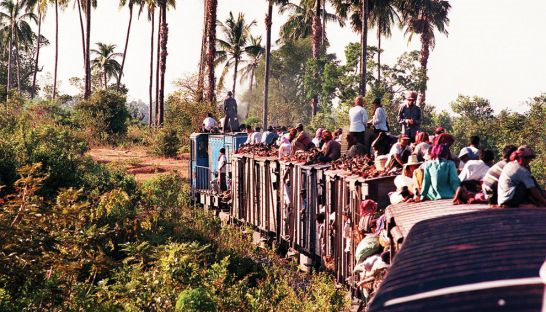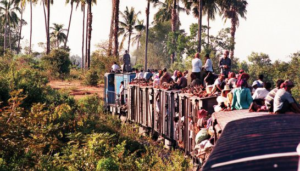
All aboard: A history of Cambodia’s railways
By Brent Crane
Last Saturday in Phnom Penh, to a crowd of thrilled townsfolk and pushy photographers, Prime Minister Hun Sen boarded a refurbished train at the Royal Railway Station bound for Sihanoukville. It was the grand reopening of Cambodia’s first passenger train in 14 years and, for some Cambodians, it was a kind of revival.
“The train and railway were almost totally destroyed by war more than 40 years ago,” the prime minister posted on his Facebook page during the seven-hour ride south. He typed from a plush booth in the VIP carriage with a small fan on his table. In the back of the car stood a tuxedoed barman.
“Because our country is now at peace, we have the opportunity to rebuild our transport infrastructure,” Hun Sen wrote.
Cambodia’s railway system – two lines that run the western length of the country – has long been plagued by war, political violence and the neglect that spoils most infrastructure in a poor, war-torn country. But even before its abandonment, the railway faced gloom.
In its short lifespan, Cambodia’s 600 kilometres of railway has been witness to kidnapping and murder. It has carried whole cities to slavery and been employed in mass atrocities.
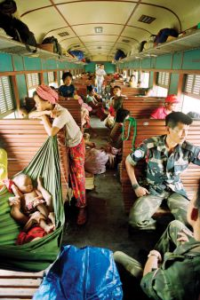
“Without the trains, it would have been impossible to relocate all those people,” said Youk Chhang, director of the Documentation Center of Cambodia (DC-Cam), which archives the atrocities. “Only a train can do that.”
Chhang was talking about what he calls the “second evacuation”: the forced relocation of Cambodians to different communes around the country, five months after the initial “evacuation” of Phnom Penh in April 1975. Over fewer than 10 days, Chhang said, the Khmer Rouge ran trains “day and night”, transporting a clueless citizenry in cattle cars to work camps across the country.
“Nobody talked on the train,” said Chhang, who was speaking from personal experience. He remembers how, as a 14-year-old, he and his family were herded into an open-air carriage in Takeo province by Khmer Rouge soldiers. They were not told where they were going.
The overcrowded train trundled northward for two days – “So slow you could count the stars”, Chhang said. Despite the horrors – the standing-room-only claustrophobia, the petrified silence, the fear of the unknown destination – Chhang still found unexpected pleasures in the scenery. “The mountains and the palm trees and the waterfalls – it was all so beautiful,” he said.
“Railroads were a key component of Khmer Rouge practice,” wrote James Tyner, a political geography professor at Kent State University, in a book about the second evacuation published by DC-Cam.

“The forced transfer of hundreds of thousands of people both between zones and within zones . . . necessitated a coordinated strategy of mass movement not unlike those utilized by Nazi Germany during the Holocaust,” he wrote.
“Each train wagon was filled with at least a hundred people,” explained DC-Cam researcher Savina Sirik, who has interviewed survivors and written extensively about the evacuations.
“When they reached the destination, people were counted and ordered to get off the train. Some families were separated from one another at each train station. In most cases, they were picked up by ox carts to go to the village where they were assigned,” she said. Chhang described his departure in the same way, and 41 years later, he coloured that train as “a snake which took you all the way to hell”.
After the second evacuation, said Cambodia historian Henri Locard, the train underwent a renovation courtesy of communist China, a key ally of Democratic Kampuchea.
The DK Ministry of Information and Propaganda had a revolutionary song composed for the railway workers, a tune so “brisk and rousing”, said Locard, that composer Him Sophy later included a version of it in his opera Where Elephants Weep. Under Pol Pot, the railway lines transported food and weapons bound for China.

The track was built for trade. According to historian Jean-Michel Filippi, the French unveiled its protectorate’s first railroad in June 1932, the Phnom Penh to Battambang line, with plans of expanding trade with neighbouring Thailand. It took 35 months to build, said Locard.
The line was, as described by the project’s lead engineer Henri Maux in La Belle Aube: Henri Maux, jeune ingénieur en Indochine, 1927-1937, a part of King Monivong’s “great modernisation campaign to develop the potential wealth of the country”. It was a decade that Locard characterised as “the climax of the French achievements in the colonial age.”
The southern line that extends from Phnom Penh to Sihanoukville was constructed three decades later to deliver goods to the newly built Sihanoukville port. The line was made within a newly independent Cambodia, under orders from then-prime minister Norodom Sihanouk, whose grandfather had overseen the first track. And like the past railway, this one was financed by the French.
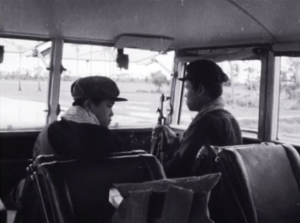
After the Vietnamese invaded and sent the Khmer Rouge scurrying into the jungle, the railway was used for freight and limited passenger service. (In the 1998 Rithy Panh film set in that period, One Evening After the War, the opening scene takes place on a train.)
But after Hanoi pulled out and the United Nations poured in a few years after, the line soon became a target for marauding Khmer Rouge militias and armed thieves who had been emboldened by the power vacuum.
During the early 1990s, the train was so regularly ambushed by these gun-wielding bandits that it prompted the Post to title an article Braving the S’ville express.
“[R]ail travel in Cambodia is not an occasion without peril,” warned the correspondent. Assaults occurred so often they became predictable.
“The Phnom Penh to Sihanoukville train is usually ambushed at the same spot, near a coconut plantation about 10 km east of Kampot town,” noted another Post reporter in 1994.
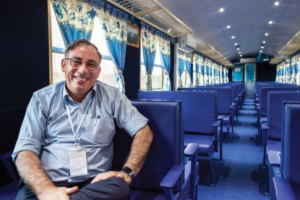
Sometimes there was bloodshed. In July of that year, militants in Kampot ambushed one Phnom Penh-bound train, killing 13 Cambodians and taking three Western backpackers hostage. They were executed two months later.
But not all memories of the train are so grim. Nop Sambok, 80, is a retired repairman who worked at the Kampot railway station from 1959 to 1999 (with a gap during DK). Sambok remembers train travel in the ’60s as a crowded, jovial affair, with regular streams of vendors and travellers.
“I was really happy during that time, because I saw a lot of people using the train with smiles,” Sambok said. “Now it is totally different. I regret that we don’t use trains more,” he added.
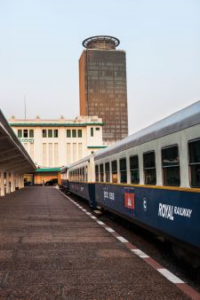
But those halcyon days Sambok remembers might not be gone forever. According to John Guiry, chief executive of Royal Railway, which operates the railroad here under a 30-year concession, demand for train travel is high. Passenger tickets for the newly resumed Phnom Penh-Sihanoukville line, he said, have been selling out a week in advance.
His firm plans on opening passenger service on the dilapidated northern line to Sisophon, Guiry said, but it will take some time to repair the tracks.
Until then, the “S’ville express” remains the sole option for the road- and plane-weary traveller (or prime minister). Fortunately, bravery is unneeded.
Additional reporting by Vandy Muong
Source: http://www.phnompenhpost.com/post-weekend/all-aboard-history-cambodias-railways
